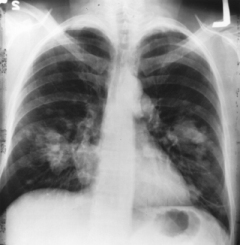Special Feature Reveals Wide Variations in Lung Cancer Trends across States
 A new report from the nation’s leading cancer organizations shows that, for the first time since the report was first issued in 1998, both incidence and death rates for all cancers combined are decreasing for both men and women, driven largely by declines in some of the most common types of cancer. The report notes that, although the decreases in overall cancer incidence and death rates are encouraging, large state and regional differences in lung cancer trends among women underscore the need to strengthen many state tobacco control programs. The findings come from the “Annual Report to the Nation on the Status of Cancer, 1975-2005, Featuring Trends in Lung Cancer, Tobacco Use and Tobacco Control”, online Nov. 25, 2008, and appearing in the Dec. 2, 2008, Journal of the National Cancer Institute.
A new report from the nation’s leading cancer organizations shows that, for the first time since the report was first issued in 1998, both incidence and death rates for all cancers combined are decreasing for both men and women, driven largely by declines in some of the most common types of cancer. The report notes that, although the decreases in overall cancer incidence and death rates are encouraging, large state and regional differences in lung cancer trends among women underscore the need to strengthen many state tobacco control programs. The findings come from the “Annual Report to the Nation on the Status of Cancer, 1975-2005, Featuring Trends in Lung Cancer, Tobacco Use and Tobacco Control”, online Nov. 25, 2008, and appearing in the Dec. 2, 2008, Journal of the National Cancer Institute.
Although cancer death rates have been dropping since the publication of the first Annual Report to the Nation 10 years ago, the latest edition marks the first time the report has documented a simultaneous decline in cancer incidence, the rate at which new cancers are diagnosed, for both men and women. Based on the long-term incidence trend, rates for all cancers combined decreased 0.8 percent per year from 1999 through 2005 for both sexes combined; rates decreased 1.8 percent per year from 2001 through 2005 for men and 0.6 percent per year from 1998 through 2005 for women. The decline in both incidence and death rates for all cancers combined is due in large part to declines in the three most common cancers among men (lung, colon/rectum, and prostate) and the two most common cancers among women (breast and colon/rectum), combined with a leveling off of lung cancer death rates among women.


